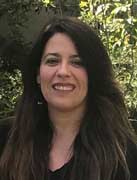Plant an orchard, harvest its fruit in three years. Pick an apple, sell it next spring. Buy a machine, pay it off in five years.
“Our choices today shape our reality tomorrow,” said Mark Hambleton of Double M Orchards in Quincy, Washington.
That future-casting is the theme of this year’s Washington State Tree Fruit Association Annual Meeting. The 115th iteration of the conference is scheduled for Dec. 9–11 at the Wenatchee Convention Center. With roughly 1,800 to 2,200 registrants per year, it’s one of the largest tree fruit gatherings in the United States.
The conference aims to provide growers with tools to make decisions with the future in mind, said Hambleton, this year’s annual meeting chair. Decision-making tools become even more important if the future includes a potential market contraction.
“We have to prepare for a downturn,” Hambleton said.
Farmers have always adjusted to the stresses of the industry by boosting production, Hambleton said. A standard block once produced 40 to 50 bins per acre, but now growers expect yields of 80 to 100 bins per acre. The extra volume is good but not enough to keep growers profitable anymore.
He hopes the presentations at the conference give growers a way to measure the financial health of their orchards, truly comparing their real costs of production and their rates of return. “Ideas on how to benchmark and judge yourself,” he said.
One presentation will be from George Kantor, a researcher and educator at the Robotics Institute at Carnegie Mellon University in Pittsburgh, Pennsylvania. Hambleton and the Tree Fruit Association have asked him to discuss how technology such as autonomous sprayers, harvest machines and drones can be used in orchards now, not just in an untold number of years, Hambleton said.

The conference also will feature one of the first presentations from Carolina Torres, Washington State University’s new endowed chair of tree fruit postharvest systems. She will discuss fruit maturity management for precision harvest.
As usual, the convention will feature an entire day of Spanish sessions, which this year will include more information on fire blight, Hambleton said. Last year at the conference, attendees posed lots of questions about the topic. Other Spanish topics will include worker protection and training updates and Food Safety Modernization Act inspections.
As of the end of September, conference organizers had not confirmed who would give the Batjer Memorial Lecture, which functions as a keynote address on the opening day of the conference.
Here are a few other highlights on tap for the annual meeting:
—A panel discussion about little cherry disease.
—A presentation by Karina Gallardo, a Washington State University agricultural economist, about her recent cost-of-production research.
—A panel discussion about communications between the warehouse and the field.
—A report about S-alleles and new pollinizers in apples from Stefano Musacchi, endowed chair of tree fruit physiology and management at Washington State University.
—An entire session on WA 38, the new WSU apple branded Cosmic Crisp hitting store shelves commercially this year.
—Research news flashes.
—The industry awards banquet, featuring Good Fruit Grower’s Grower of the Year award. •
—by Ross Courtney






Leave A Comment